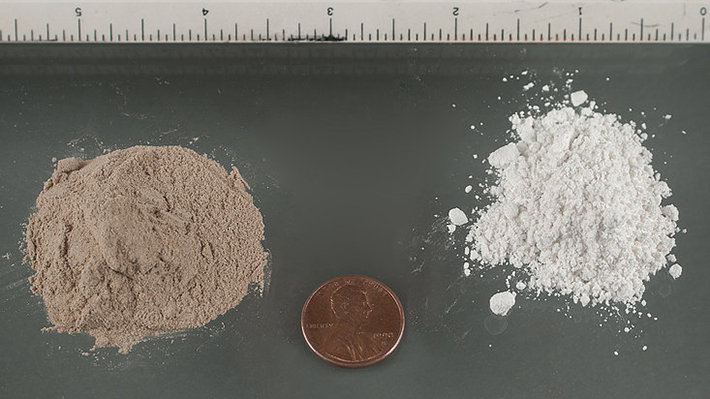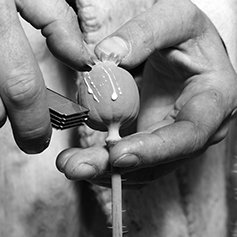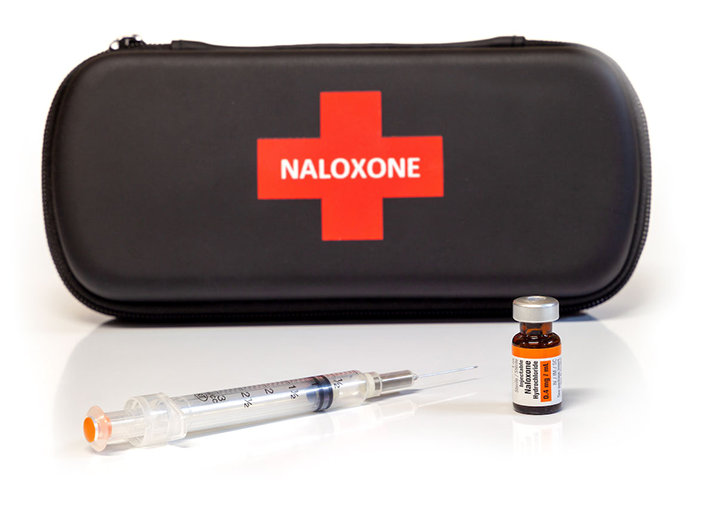Heroin Addiction Facts and Information
Heroin is a highly addictive, powerful and dangerous illegal drug used by millions of people worldwide. There is currently no known medical use for the drug, and once addicted, the drug user must continue to use the drug several times a day in order to avoid horrific and painful drug withdrawal symptoms. These withdrawal symptoms, while not usually life threatening, ensure that users are rarely able to stop using the drug without outside intervention.
What Is Heroin?
Heroin is derived from the resin of the poppy plant, which is refined first into opium and then morphine before heroin is created. According to a global market report from 2010 more than 15 million people consume over 55 billion dollars worth of heroin each year. When all illicit opiates are considered, the dollar value rises to over 65 billion.

In the United States, heroin has seen a dramatic comeback in the last decade. This shift is largely attributed to changing policies regarding opioid painkillers since many users start to use heroin due to the fact that pain medication, both legal and illicit, becomes harder to obtain. This is one of the many tragedies associated with the prescription-drug epidemic.
In fact, North America consumes more than 40% of the world’s heroin. Once the drugs hit US soil, they are usually distributed to gangs and criminal groups that break the large shipments into smaller packages. From there, these small packages find customers with cravings and addictions.
The area suffering the greatest threat from heroin in the United States is the Northeast, where trafficking channels have existed for many decades. Increased production in Mexico and South America has resulted in more American cities receiving shipments of this drug. Miami, Texas and the Pacific Coast states have also been particularly hard hit by this drug.
Fueled by ever-increasing demand, there is no indication that the heroin problem is going to stop any time soon.
How Is Heroin Made?
Heroin production begins in the opium fields of Afghanistan, Pakistan, India, Myanmar, Laos, Colombia, Mexico, and Guatemala. Of these areas, Afghanistan produces the majority of the world’s opium. Despite years of efforts to curb production, 2018 marked a record year in opium production in Afghanistan. This growth is driven mainly by economic concerns. An average farmer producing opium on a two-acre field can see an annual income of around $3,000 compared with $1,000 for a crop of wheat.

Opium, the precursor to heroin, is produced by first making a small incision in the seed pod of the poppy plant. The thick, milky liquid is then collected and allowed to dry. It is then formed into balls to be sold as raw opium. This raw opium is then mixed with a calcium solution and allowed to settle. The top layer containing morphine is siphoned off and placed into a barrel where it is mixed with additional chemicals which causes the morphine to fall to the bottom of the barrel. This is then carefully removed and dried to form a morphine base used to produce heroin. After several more steps and chemical reactions, a fine, white heroin powder is produced.
Other methods of heroin production exist and result in varying impurities. One well-known type of heroin resulting from these other methods is known as black tar. It is produced in Latin America and in other parts of the world. This type of heroin is usually cheaper but carries with it greater health risks because of the incomplete chemical reactions which cause the brown or black color.
How Is Heroin Used?
Heroin can be used in multiple ways. Common methods include insufflation (sniffing), intravenous injection (shooting), smoking (chasing the dragon) and by suppository (plugging). Heroin can be taken orally, however the effect is greatly diminished. The various methods of heroin use create different effects or highs for the users. Generally, the method that delivers the drug to the brain the quickest is both the most potent and the most dangerous method. For instance, it’s common for users to insufflate the drug through the nose. This allows the drug to enter the bloodstream through the small blood vessels located in the nose. A more potent form of this is to use an aerosol nasal spray to first dissolve the heroin and then deliver the drug by a fine mist into the nose. In either case there is a big chance that some of the drug may be lost down the nose and later swallowed, blunting the effects. For this reason it is almost inevitable for a heroin addict to begin intravenously injecting the drug.
In addiction to varying effects, different methods of use carry additional health risks. For instance, snorting has been shown to aggravate severe asthma, resulting in death. Injection also increases the risk of being exposed to HIV, viral hepatitis, and other infectious diseases through contact with infected blood or body fluid that results from the sharing of syringes and injection paraphernalia. While snorting and other methods do not incur the same risk, the diseases may still be spread from unprotected sex since the drug may inhibit the user’s usual concern about using precautions.
Signs and Symptoms of Heroin Abuse
Often friends and family are unaware of the severity of drug use in loved ones. While some evidence of heroin use in its latter stages may be obvious, spotting the signs early and getting someone help can prevent tragedy and heartbreak. Signs of heroin use include dilated pupils, running noses, sleepy eyes, vomiting, and signs of intravenous use on the arms, legs, feet, or hands of the individuals. Other signs include infrequent bathing, dirty clothes, and slurred speech.
The user may experience drug mouth, flushed skin and may experience “nodding out.” “Nodding out” or “being on the nod” is a common experience for every heroin user when they fall in and out of consciousness as the drug makes them extremely drowsy. While this effect is common to all opiates and opioids, it is most pronounced with the intravenous use of heroin.
For more detailed information on how to spot the signs of heroin addiction, follow the link to the signs of heroin addiction page.
Long- and Short-term Effects of Heroin Abuse
Heroin Addiction results in both long-and short-term effects for the user. While the most devastating effects are for the health of the user, the damage extends to financial and social areas, and causes problems with families, children and friends. No aspect of the heroin addict’s life is left untouched by this devastating drug.
Short-term Effects of Heroin
The short term effects of heroin do not differ significantly from other opiates or opioids. In fact, upon entering the brain, heroin is transformed into morphine which is then responsible for the “rush” associated with the drug. The same is true for the other drugs in the opioid or opiate category. The intensity of this pleasurable feeling is a function of how much drug is taken and what method is used to deliver the drug to the brain.
Especially with heroin, the rush is accompanied by a flushing of the skin, a heavy feeling in the limbs, and a dry mouth. This may be followed with nausea, vomiting, and severe itching. After these initial effects, many users exhibit what is called “nodding out” or “being on the nod”. These terms reference the extended period of drowsiness following the drug use. During this period heart function and breathing slow, which can lead to coma and permanent brain damage.

It’s at this stage that many users pass away. In recent years, local laws and policies have been changed to allow a potentially life saving drug called Narcan (brand name Naloxone) to be dispensed without prescription. Narcan reverses these short-term effects immediately and can return someone in respiratory distress to normal function almost immediately. While this handles the immediate medical emergency it does absolutely nothing to prevent further use. There have been multiple instances of a second overdose the same night or in the days following the administration of Narcan.
Long-term Effects of Heroin
The long-term use of heroin is known to have many severe consequences beyond addiction and the risk of death due to overdose. Actual physical changes with the brain and long-term imbalances of hormones and alteration of brain function have all been documented. These changes are not easily reversed and may persist after someone enters recovery. Other long-term effects involve the destruction of brain matter, which affects decision-making abilities and an inability to regulate behavior in response to stressful situations. This effect, coupled with physical dependence creates a situation where it becomes nearly impossible for a heroin user to stop using without outside intervention. The damage cause by the drug highlights the necessity of a long term recovery program, not simply an effort to get the individual to stop.
Heroin Withdrawal
Heroin withdrawal is caused by the body’s physical dependence on the drug. As with many other drugs, heroin causes the body to develop a tolerance in which more and more of the drug is required to have the same effect. As the dosage required to get high increases, the body adapts to function only with the presence of the drug and stopping for any length of time can create a painful situation known as withdrawal. Symptoms of withdrawal include restlessness, muscle and bone pain, insomnia, diarrhea, vomiting and cold flashes with goose bumps (”cold turkey”). Symptoms peak between 24-48 hours after the last use of heroin and completely subside after a week. While these symptoms are not usually life- threatening, they are extremely painful and driven by fear and most heroin addicts will do anything to avoid feeling the symptoms. Heroin, more than other drug, is very addictive and this withdrawal effect helps to ensure that the user cannot escape without outside help.
The Economy of Heroin
While Heroin was invented in the 1800s by the Bayer Corporation, the opium used to make it has been traded across the world for hundreds of years. The history of heroin, its creation and itss use is described in detail on our History of Heroin page. From this it is clear that heroin has a major economic impact on both the illegal drug trade and the personal financial situations of its users.
Heroin is typically sold on the street in a small glassine envelope or bag known as a “dime bag.” Often the heroin contained in these small bags are not pure and they have been cut or “stepped on” many times before reaching the street user. Often colorful packaging or stamps are used to indicate a particular brand of heroin. While these brands rarely differentiate the actual strength of these drugs, the perception of the user is that some “brands” of heroin are stronger than others, and gangs have been known to fight for control of a particular brand.
More Information on Heroin
The Narconon website contains many other resources relating to heroin, its use, history and abuse. If you suspect a loved one is using heroin, the first step is to identify the drug being used by noticing the signs of drug abuse.
In addition, it’s important to understand how to deal with a loved one suffering from addiction, so make sure you learn how to talk to and addict.
For more detailed information on heroin, its history, and recovery or treatment meant for the drug:
- See: Heroin History, Statistics, and Information
- See: Heroin Addiction, Recovery, Rehabilitation and Treatment
Sources:
- https://www.unodc.org/documents/wdr/WDR_2010/1.2_The_global_heroin_market.pdf
- http://www.emcdda.europa.eu/publications/eu-drug-markets/2016/online/heroin/global-overview
- https://www.reuters.com/article/us-afghanistan-poppies-farmer/afghan-farmers-stick-to-growing-opium-in-the-face-of-less-lucrative-options-idUSKBN1I1067
- https://www.deamuseum.org/ccp/opium/production-distribution.html
- https://www.ncbi.nlm.nih.gov/pmc/articles/PMC3088121/
- https://journal.chestnet.org/article/S0012-3692(15)32464-8/fulltext
- https://www.drugabuse.gov/publications/research-reports/heroin/why-are-heroin-users-special-risk-contracting-hivaids-hepatitis-b-c
- https://www.drugabuse.gov/publications/research-reports/heroin/what-are-immediate-short-term-effects-heroin-use
- https://www.npr.org/sections/health-shots/2018/10/29/660640838/opioid-antidote-can-save-lives-but-deciding-when-to-use-it-can-be-challenging
- https://www.drugabuse.gov/publications/research-reports/heroin/what-are-long-term-effects-heroin-use
- https://www.justice.gov/archive/ndic/pubs2/2580/heroin.htm
 ®
®